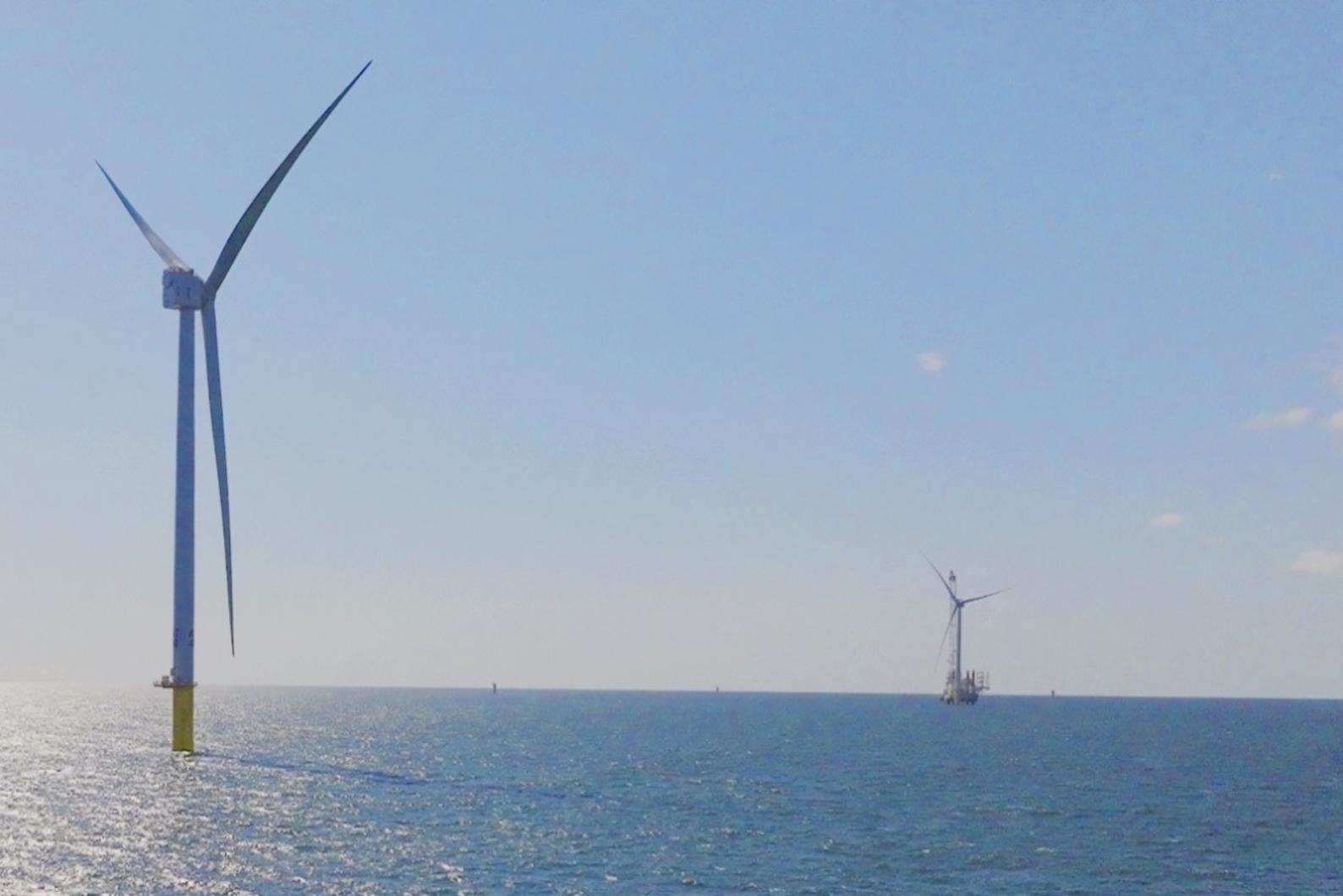Five offshore wind turbines in the waters south of the Vineyard are now sending 68 megawatts of power to the regional grid, the first time such a project has ever delivered a steady flow of electricity in Massachusetts.
The milestone was cheered by state officials, who see the Vineyard Wind project as the first of several expected to be built in a wide swath of ocean off the Island’s shores.
Vineyard Wind sent its first power to the grid on Cape Cod in January, but since then only intermittently delivered energy as it continued to build out the massive turbines. With the first cluster of turbines now up and running, the 68 megawatts of power is enough energy for about 30,000 homes in Massachusetts, backers say.
“This marks a turning point in the clean energy transition,” Gov. Maura Healey said in a statement. “After many decades of advocacy, research, policymaking, and finally construction, America’s offshore wind industry has gone from a dream to reality.”
Nine turbines have been built about 14 miles off the Island, according to parent company Avangrid. A 10th is being installed and an 11th is being transported to the area.
Vineyard Wind, first pitched in 2017, has been behind schedule, with the company previously expecting to deliver power by the end of 2023.
Officials did not say when they expected all 62 turbines, each taller than the Statue of Liberty, would be completed.
Hundreds of more turbines are expected to join Vineyard Wind, at some point. The federal government has approved construction for Revolution Wind and South Fork Wind, both to the southeast of the Vineyard.
In total, there are nine offshore wind energy lease areas off the Island.
Vineyard Wind’s progress comes as the deadline for companies to put in bids for state energy contracts approaches. Last year, Ms. Healey announced a new effort to procure up to 3,600 megawatts of offshore wind power, the largest call out to developers in the state’s history.
The energy contracts, where developers promise to supply certain amounts of power, have proved to be stumbling blocks. Two companies last year paid tens of millions of dollars to get out of contracts that were created prior to the pandemic, but were no longer economically viable, developers have said.
The new bidding process was started by the state to give developers more flexibility and get offshore wind development, a major state goal, over the finish line. The deadline for new proposals is March 27.







Comments (10)
Comments
Comment policy »